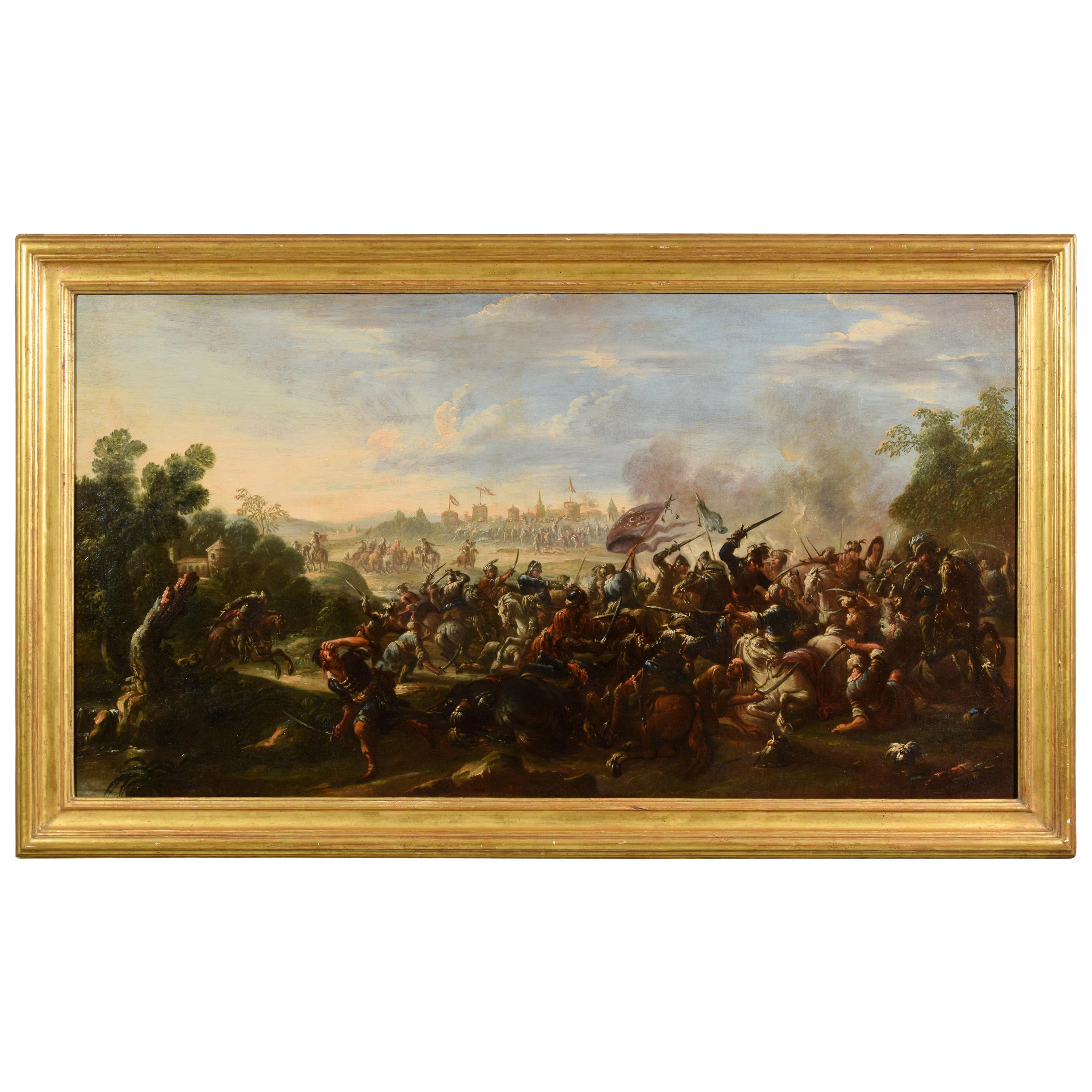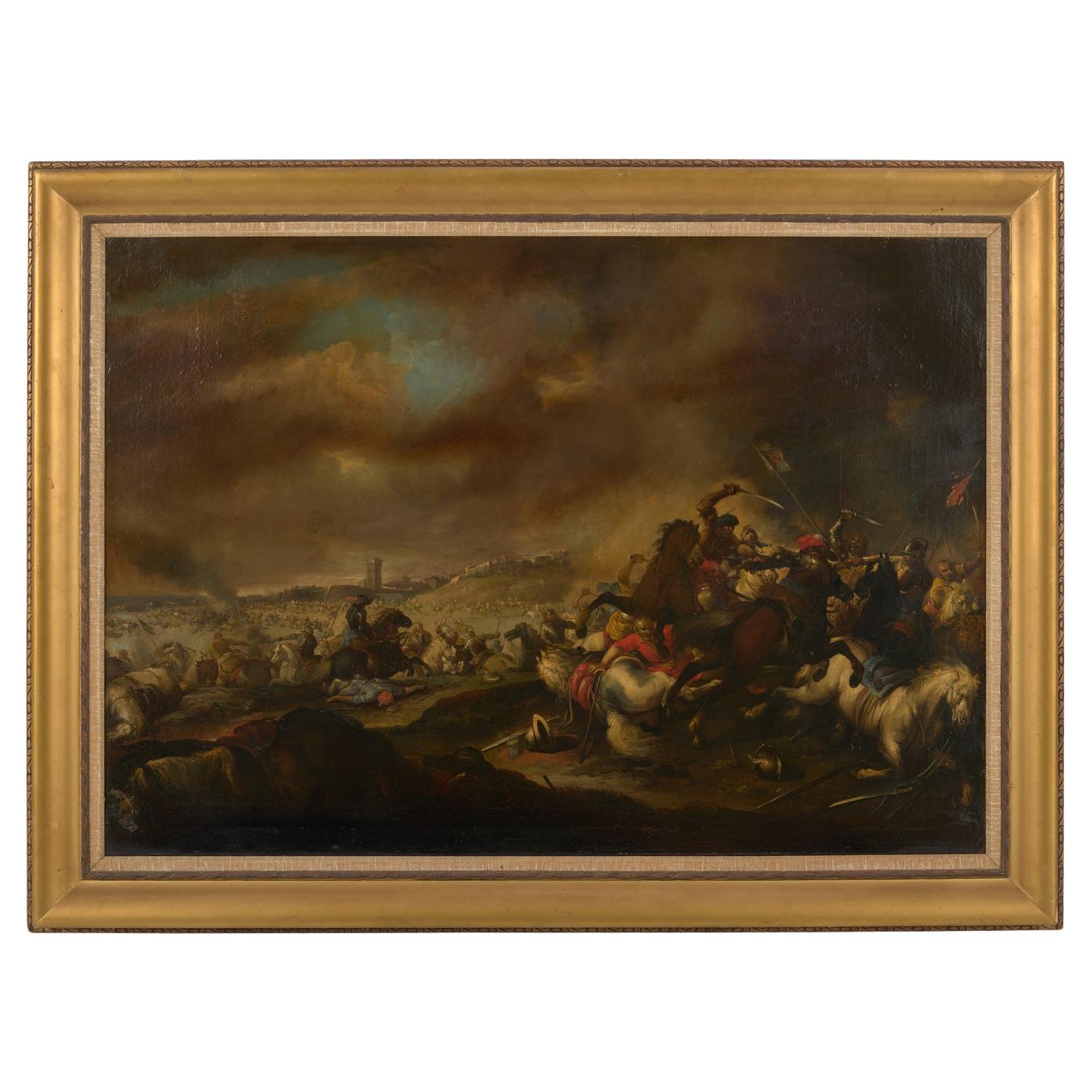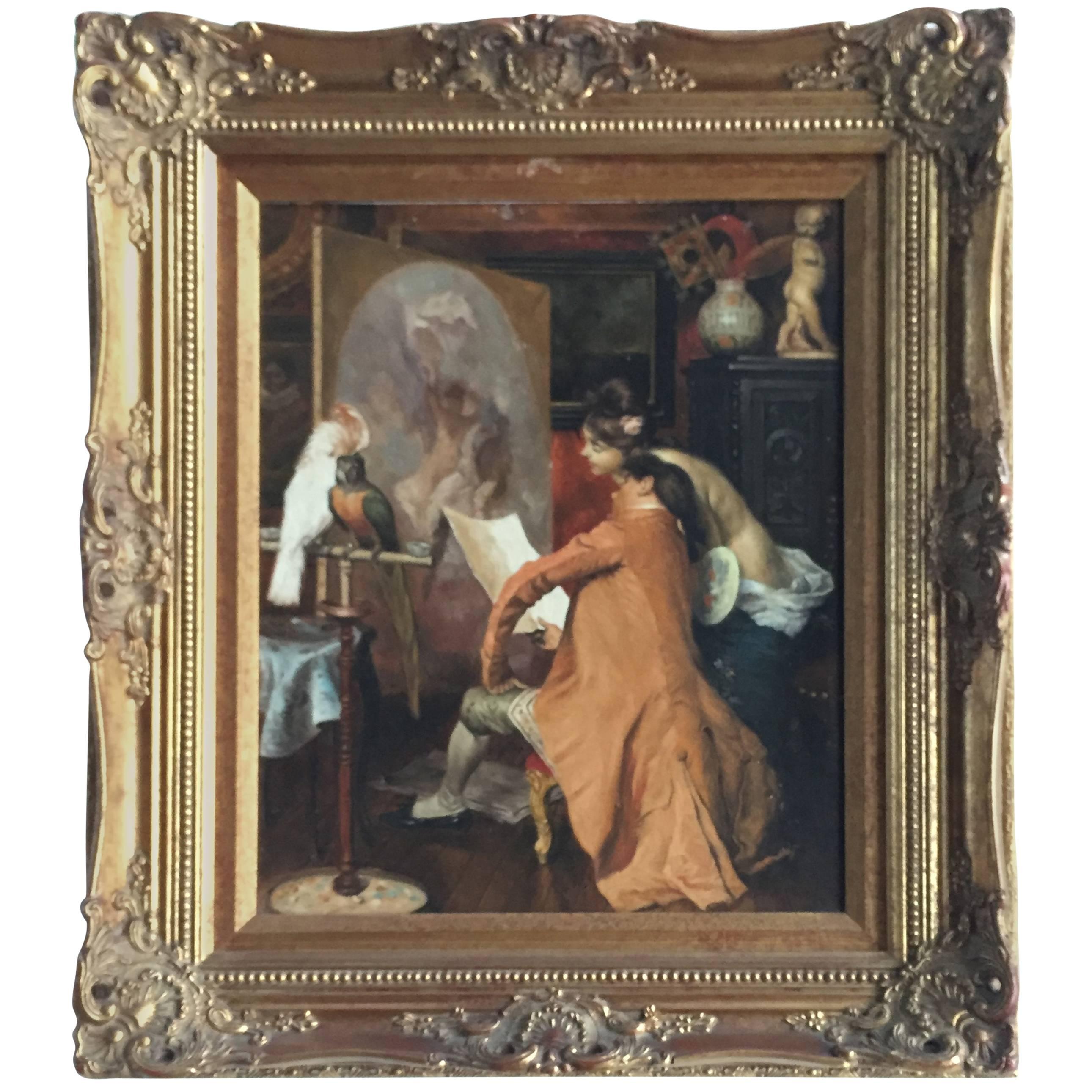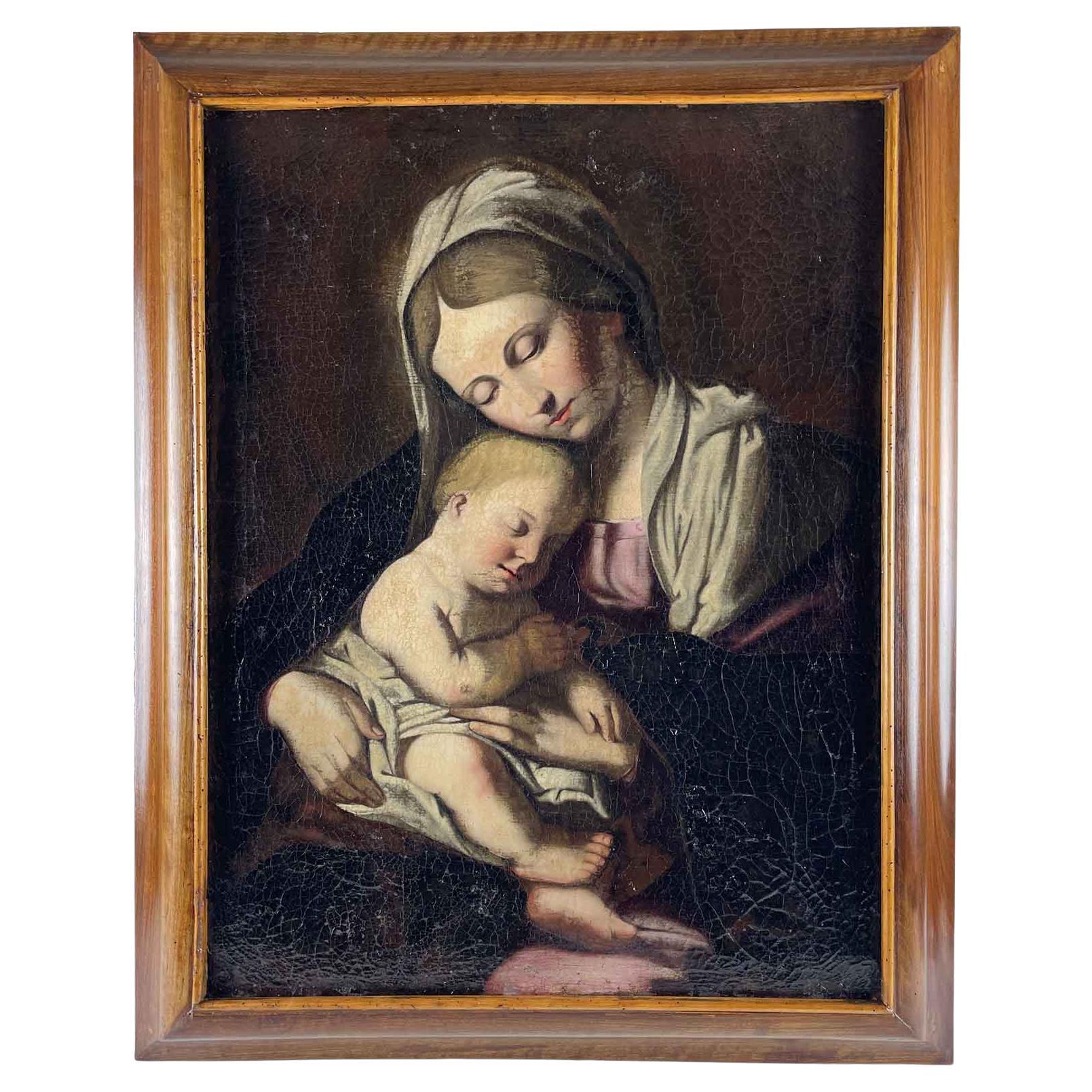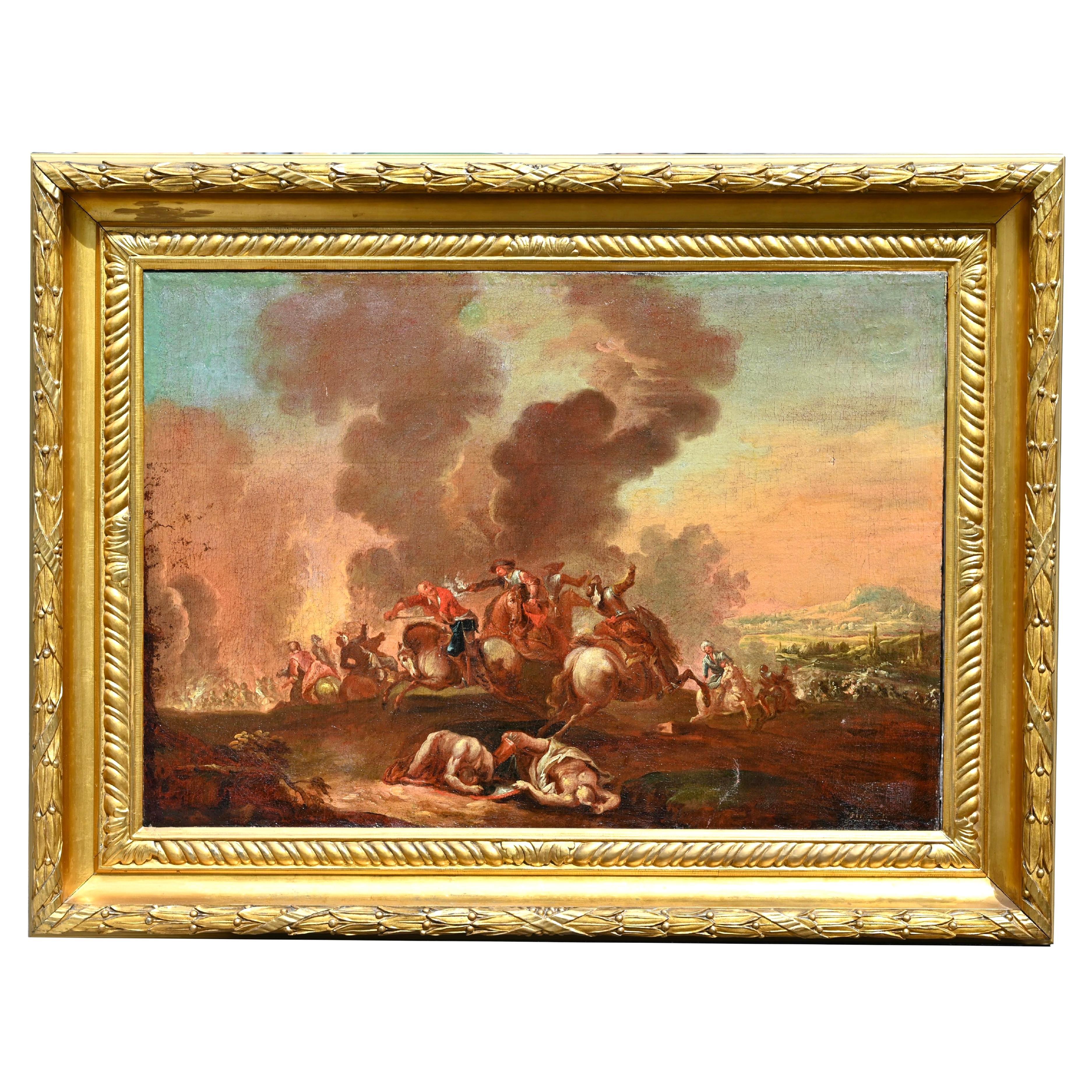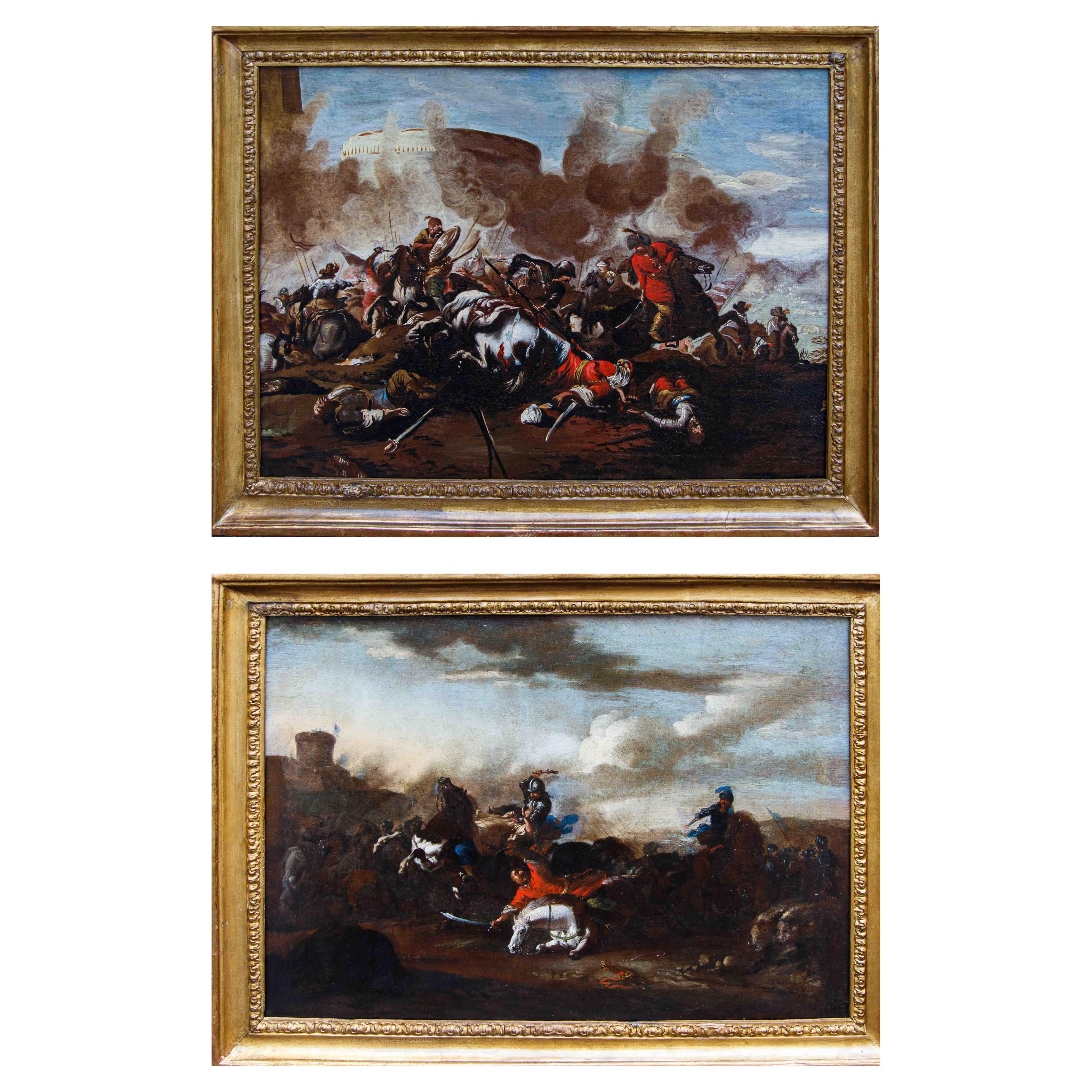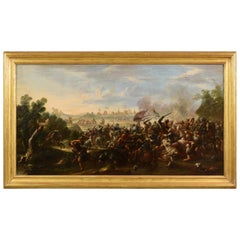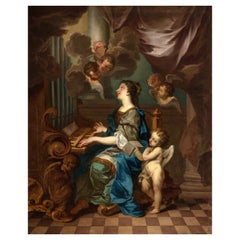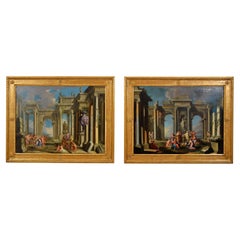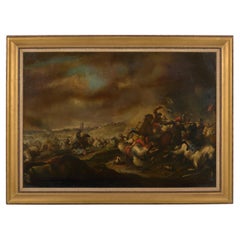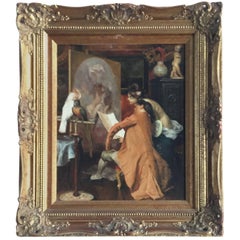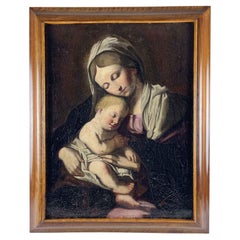Items Similar to 17th Century, Italian Painting with Battle attributed to Marzio Masturzo
Want more images or videos?
Request additional images or videos from the seller
1 of 12
17th Century, Italian Painting with Battle attributed to Marzio Masturzo
About the Item
Marzio Masturzo, attributed (Active in Italy - in Naples and Rome- in the second half of the 17th century)
"Battle between cavalry and vessels with fortified city on the left"
Oil on canvas, Italy, 17th century
The painting depicts a bloody battle between two cavalry. The clash, described in the foreground, is characterized by a strong dynamism and is set in the plain overlooking a fortified city, located by the sea. In the background is described a city wall with an imposing fortress and in the distance houses and churches of a town. The horizon is marked by some mountains and a rock rises precipitously over the gulf. On the right, a naval battle is underway: you can see some warships with hoisted sails that, close to the shore, are engaged in the fight. Smoke, fire and cannons participate in the dramatic description of the event. The color of the painting focuses on the balanced play of grey and ochre, where red and blue stand out in the foreground bright that suggest to the observer the crucial point of the conflict. The tormented sky contributes, with the vegetation in the foreground on the left, to framing the painting.
The complex and well-balanced composition, the ample descriptive space assigned to the setting, the chromatic palette, as well as the way in which the characters of the canvas are described, allow to attribute the painting to a painter active in Naples in the mid-seventeenth century.
The genre of battle painting found great success in the collections of the Italian and European nobility of the seventeenth and eighteenth centuries. The battles of the Italian Renaissance, in which the scene converged towards a precise protagonist, evolve towards a type of combat "without hero". The bloody realism of the details and the dynamic development of the narrative confuse the figure of the protagonist, when present, to give importance to the swirl of horses and armed fighters, among which, moreover, does not emerge a winner.
The canvas refers to the pictorial results of the artistic production of Marzio Masturzo.
Certain documents relating to Masturzo’s life and movements are scarce; it was equally difficult to reconstruct a catalogue of autographed works from critics. Through paintings in private collections, in museums and paintings passed on the antiques market it has been possible to identify a copious corpus of works that can be traced back to his hand. The work of art historians, together with that of antiquarians, in conferring proper attributions in order to best outline the figure of Masturzo, continues but studies are still in progress. In this sense, the work of Giancarlo Sestieri should certainly be noted, who investigated the artistic production of the “battaglisti” and Masturzo, thus allowing the comparison of the numerous photographic works reported, to identify the stylistic qualities that distinguish the corpus of paintings assigned to him today.
The few news that he has around his life date back to his apprenticeship with Paolo Greco, uncle of Salvator Rosa, and then in the workshop of Aniello Falcone. The close friendship that binds him to the Rose led him to follow him to Rome, where he became a faithful imitator.
Under the name of Marzio Masturzo were brought together several battles linked by analogous inventive, stylistic and pictorial correspondence. The works of certain attribution (including the battle of the National Gallery of Rome) bear witness to the painter’s closeness to the Rosa, but also, according to Giancarlo Sestieri, to Cerquozzi and the initial phase of Jacques Courtois called the Burgundian. Masturzo proves to be a valid communicator of the specific modules developed in Naples and Rome with a painting already open to a Baroque interpretation. In his works the main scene of the conflict is inserted in a landscape context with well-balanced backgrounds, in which appear fortresses, castles and fortifications with round or square towers, sometimes inspired by royal buildings. The chromatic palette is articulated by the contrast between the grey-blue notes and the bright tones of red and blue. Features are its whirling clouds that rise from the clash.
The canvas finds several possible comparisons with works belonging to his corpus, as you can see in some of the images here proposed.
Masturzo inserted in his works elements of architecture inspired by real buildings and then invented fortified citadels and architectural whims. An example of this is the Maschio Angioino, described several times with some interpretative variants. In the canvas in question stands out, within the walls, the uniqueness of the fortress of Castel del Monte, surrounded by an urban fabric of fantasy.
We apologize for any errors in translation from Italian.
- Dimensions:Height: 49.61 in (126 cm)Width: 73.23 in (186 cm)Depth: 2.76 in (7 cm)
- Style:Baroque (Of the Period)
- Materials and Techniques:
- Place of Origin:
- Period:Late 17th Century
- Date of Manufacture:Late 17th Century
- Condition:Refinished. Cleaning of the pictorial layer.
- Seller Location:IT
- Reference Number:1stDibs: LU4405219680702
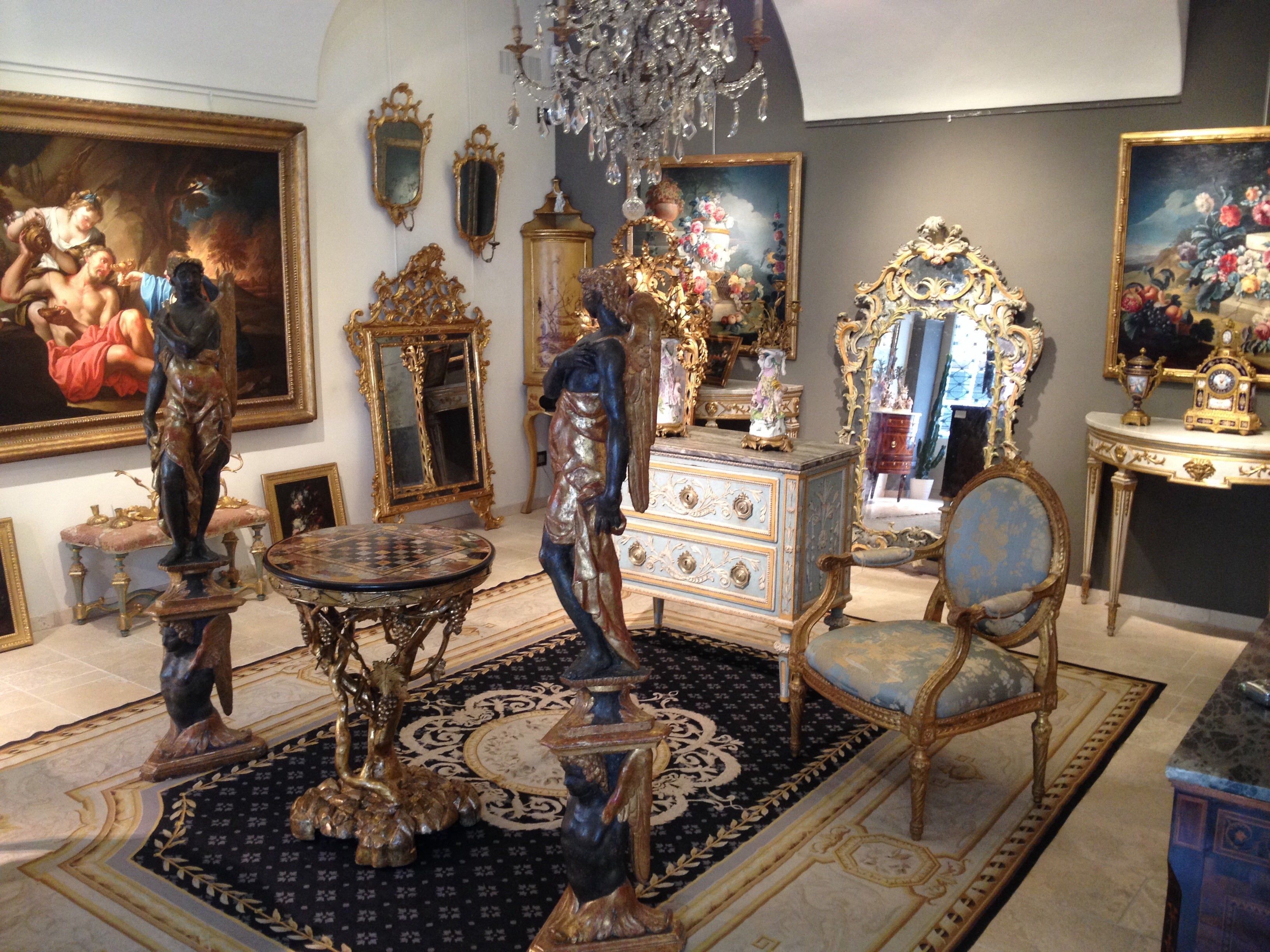
About the Seller
5.0
Platinum Seller
Premium sellers with a 4.7+ rating and 24-hour response times
Established in 1980
1stDibs seller since 2019
53 sales on 1stDibs
Typical response time: <1 hour
- ShippingRetrieving quote...Shipping from: Italy
- Return Policy
Authenticity Guarantee
In the unlikely event there’s an issue with an item’s authenticity, contact us within 1 year for a full refund. DetailsMoney-Back Guarantee
If your item is not as described, is damaged in transit, or does not arrive, contact us within 7 days for a full refund. Details24-Hour Cancellation
You have a 24-hour grace period in which to reconsider your purchase, with no questions asked.Vetted Professional Sellers
Our world-class sellers must adhere to strict standards for service and quality, maintaining the integrity of our listings.Price-Match Guarantee
If you find that a seller listed the same item for a lower price elsewhere, we’ll match it.Trusted Global Delivery
Our best-in-class carrier network provides specialized shipping options worldwide, including custom delivery.More From This Seller
View All17th Century, Italian Painting with Battle Between Christian and Turkish Cavalry
Located in IT
17th century, Italian oil on canvas painting with battle between Christian and Turkish cavalry
The oil on canvas painting depicts a battle between Christian and Turkish cavalry. C...
Category
Antique Mid-17th Century European Baroque Paintings
Materials
Canvas
$32,369 Sale Price
20% Off
17th Century, Italian Painting with Saint Cecilia with Angels in Concert
Located in IT
17th century Roman school, Santa Cecilia with angels in concert, oil painting on canvas
The valuable painting, in excellent condition, depicts Sa...
Category
Antique 17th Century Italian Baroque Paintings
Materials
Canvas
$29,595 Sale Price
20% Off
17th Century, Italian Painting with Still Life with Fruit, Dogs and Cat
Located in IT
17th Century, Italian painting with still life with fruit, dogs and cat
Measurements: With frame cm W 93 x H 75.5 x D 4; Frame cm W 82.5 x H 66.5
The...
Category
Antique 17th Century Italian Baroque Paintings
Materials
Canvas
$17,109 Sale Price
20% Off
17th Century, Pair Italian Paintings Architectural Capriccio by Alberto Carlieri
By Alberto Carlieri
Located in IT
17th century, Pair of paintings depicting Architectural Caprices with Bacchanal and Sacrifice Scene, Alberto Carlieri (Rome 1672-1720)
Oil on canvas; Dimensions: canvas cm H 73.5 x W...
Category
Antique Late 17th Century Italian Baroque Paintings
Materials
Canvas
18th Century, Italian Still Life Painting Attributed to Francesco Lavagna
By Francesco Lavagna
Located in IT
Francesco Lavagna (Italy -Naples 1684-1724)
"Still life with flowers and watermelon and hermas with garden in the background"
The painting, beautifully made and in good condition, d...
Category
Antique Early 18th Century Italian Baroque Paintings
Materials
Canvas
17th Century, Italian Painting with Virgin and Child by Follower of Van Dyck
By Anthony van Dyck
Located in IT
17th century, Italian painting with virgin and childr by Follower of Sir Anthony van Dyck
cm W 90 x H 113; cornice cm W 111 x H 135 x D 7
The canvas depicts the Madonna with the Chi...
Category
Antique Late 17th Century Italian Baroque Paintings
Materials
Canvas
$32,369 Sale Price
20% Off
You May Also Like
A Late 17th Century Painting Depicting A Cavalry Battle
Located in ARMADALE, VIC
A Late 17th Century Painting Depicting A Cavalry Battle
Height: 115 cm Width: 75 cm Depth: 6 cm.
Provenance: Private Australian Collection.
Category
Antique Late 17th Century Italian Baroque Paintings
Materials
Canvas
17th Century Painting
Located in Miami, FL
17th century painting
J.Castano
17th century
Spain
Category
Antique 17th Century Baroque Paintings
Materials
Canvas
$25,000
Madonna With Child Italian Painting Late 17th Century
Located in Milano, MI
Madonna and Child late 1600s, oil painting on canvas from northern Italy, in good condition, within walnut frame, from a private collection in Milan. The work depicts the Virgin hol...
Category
Antique Late 17th Century Italian Baroque Paintings
Materials
Canvas, Nutwood
17th Century Old Master Painting, Large Battle Scene, Oil on Canvas
Located in Bradenton, FL
17th Century Large Old Master Battle Scene Painting. Flemish School, circa 1610 - 1680. Oil on canvas painting depicts a dynamic battle scene fi...
Category
Antique 17th Century Dutch Baroque Paintings
Materials
Canvas
Neapolitan school, 17th century, battle scenes
Located in Milan, IT
Neapolitan School of the 17th Century
Battle scenes between Christians and Turks
(2) Oil on canvas, 52 x 71 cm
Framed, 61 x 80 cm
One genre that met with wide acclaim in seventeenth-century Neapolitan painting and flattering success among collectors was that of battle. The Parthenopean nobility loved to adorn the walls of their salons with battles depicting single acts of heroism or complex combats that exalted patriotism and warlike prowess, virtues with which members of the wealthy aristocracy of the time liked to identify.
The Church, in the Neapolitan area, was also at the forefront of commissions, commissioning artists to depict the spectacular triumphs of Christendom over the infidels, such as the memorable naval battle of Lepanto in 1571, which marked a historical turning point with the great victory over the Turks, becoming a repeated iconographic motif imbued with devotional value, replicated several times through the interest of the Dominican order, which was very devoted to Our Lady of the Rosary, who benevolently followed earthly events from above in heaven. Other themes dear to the Church within the genre were drawn from the Old and New Testaments, such as Constantine's Victory at the Milvian Bridge or St. James at the Battle of Clodius.
Among the leading Neapolitan artists of that period, several specialized in battle scenes: these include Francesco Graziani, known as Ciccio Napoletano, a battler active between Naples and Rome in the second half of the 17th century; Andrea De Lione, who lived in Naples from 1610 to 1685, a versatile narrator of battles without heroes, of horsemen assaulting or retreating, and of profane scenes immersed in a wild and primordial, yet already classicized, nature; and Carlo Coppola. The latter was active for more than twenty years, from 1640 to 1665, and his catalog, which is interesting because it bears witness to a particular historical moment and the tastes of private patrons, has yet to be defined, although many of his works are initialed. It is precisely to Coppola's corpus that these two paintings could come close: with the production of the Neapolitan battler the two paintings seem to share the smoky colors, the accentuated chiaroscuro and the marked dynamism of the scenes. Moreover, it is necessary to mention how that of the battle between Christians and Turks was an absolutely central theme in Coppola's pictorial production. Also close to the manner of the two paintings analyzed here is the production of one of Coppola's most celebrated pupils, Giovanni Luigi Rocco...
Category
Antique 17th Century Italian Other Paintings
Materials
Canvas
$9,017 / set
Italian Francesco or Pietro Graziani Neapolitan battle scene, 17th/18th Century
Located in CH
Italian Francesco or Pietro Graziani Neapolitan battle scene, 17th/18th Century
This battle scene is attributable to one of the two Graziani ( Francesco or Pietro) battle scene pain...
Category
Antique Late 17th Century Italian Baroque Paintings
Materials
Canvas
